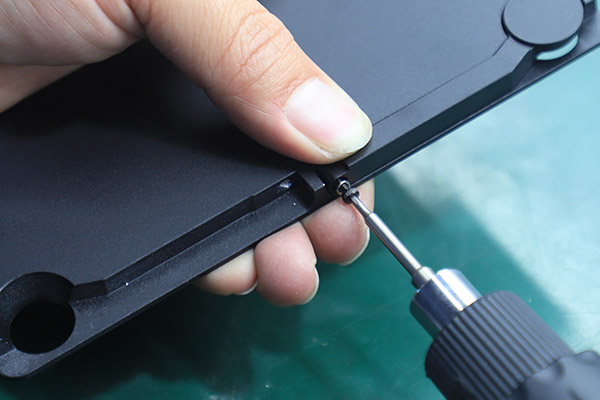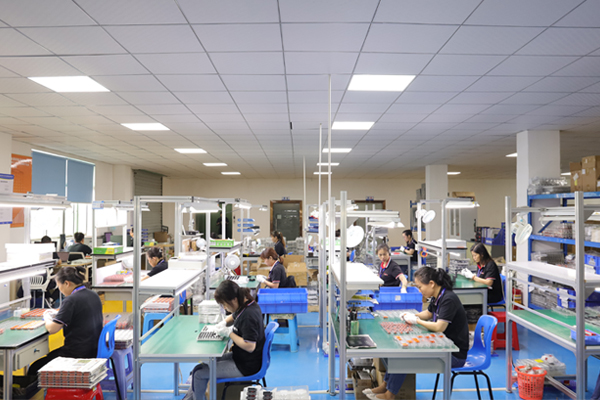15 years one-stop China custom CNC machining parts factory

Hey there I’m VMT Sam!
With 25 years of CNC machining experience we are committed to helping clients overcome 10000 complex part-processing challenges all to contribute to a better life through intelligent manufacturing. Contact us now
 171 |
Published by VMT at Jan 03 2024
171 |
Published by VMT at Jan 03 2024

Introduction:
Efficiency in the assembly process of CNC-machined parts is crucial for maintaining production timelines and ensuring the overall quality of the final products. However, when faced with slow assembly processes, difficulties in screw tightening, and resulting part scrapping, it becomes imperative to delve into the root causes of these issues. In this article, we will explore the reasons behind slow assembly efficiency, challenging screw tightening, and subsequent part scrapping in CNC manufacturing facilities, aiming to provide insights and solutions for improvement.

1. Inadequate CNC Machining Precision:
One of the primary reasons for slow assembly and challenging screw tightening could be inadequate precision in the CNC machining process. If the machined parts deviate from the specified tolerances or have inconsistent dimensions, it can lead to difficulties in alignment during assembly. CNC manufacturing facilities need to ensure that their machining processes adhere to precise specifications to avoid such issues.
2. Poor Surface Finishes:
Poor surface finishes on CNC-machined parts can contribute to difficulties in the assembly process. Rough surfaces may increase friction during component mating, making it harder to achieve smooth and efficient assembly. Addressing surface finish issues through improved machining techniques or additional finishing processes can significantly enhance the ease of assembly.
3. Inaccurate Hole Alignment:
In cases where CNC machining does not ensure accurate hole alignment in the parts, assembling components becomes a cumbersome task. Misalignment of holes can lead to difficulties in inserting fasteners and result in improper tightening. CNC manufacturing facilities should prioritize precision in hole alignment during the machining process to facilitate smoother assembly.
4. Material Selection and Hardness:
Choosing the wrong materials or inadequate hardness for CNC-machined parts can impact their assembly characteristics. Parts that are too soft may deform during tightening, while overly hard materials can pose challenges for effective screw engagement. Proper material selection based on application requirements and meticulous hardness control are essential for overcoming such issues.

5. Insufficient Lubrication:
Inadequate lubrication during assembly can contribute to friction, making it difficult to tighten screws smoothly. Insufficient lubrication may also lead to increased wear and tear on components, reducing their overall lifespan. CNC manufacturing facilities should implement effective lubrication strategies as part of their assembly processes to enhance efficiency and component longevity.
6. Poorly Designed Threads:
The design of threads on CNC-machined parts plays a crucial role in the ease of screw tightening. Poorly designed threads, with incorrect pitches or inconsistent profiles, can result in difficulties during assembly. Ensuring precision in thread design during the CNC machining phase is vital for achieving seamless screw engagement in the assembly process.
7. Inadequate Quality Control Measures:
Inefficiencies in assembly may arise from inadequate quality control measures during and after CNC machining. Failure to detect and rectify machining errors in a timely manner can lead to parts with dimensional discrepancies reaching the assembly line. Implementing robust quality control processes, including regular inspections and measurements, is essential for preventing such issues.

8. Lack of Operator Training:
The proficiency of operators involved in the assembly process is critical for efficient and smooth operations. If operators lack the necessary training to identify and address assembly challenges, it can contribute to slow and error-prone assembly processes. Continuous training programs should be implemented to enhance the skills of assembly personnel and empower them to troubleshoot issues effectively.
9. Equipment Maintenance and Calibration:
Issues with assembly efficiency may stem from poorly maintained or calibrated assembly equipment. If tools used for screw tightening are not regularly calibrated or maintained, it can result in uneven tightening, affecting the overall assembly quality. Establishing a routine maintenance and calibration schedule for assembly equipment is crucial for consistent and reliable performance.
10. Ineffective Communication Between CNC Machining and Assembly Teams:
Communication breakdowns between the CNC machining and assembly teams can lead to misunderstandings regarding part specifications and requirements. Misaligned expectations may result in the production of parts that are challenging to assemble. Improving communication channels and fostering collaboration between machining and assembly teams is essential for addressing these issues.

Conclusion:
Efficiency issues in the assembly process of CNC-machined parts can have a cascading effect on the overall production quality and timelines. Addressing the root causes, including inadequate machining precision, poor surface finishes, inaccurate hole alignment, material selection issues, insufficient lubrication, poorly designed threads, inadequate quality control measures, lack of operator training, equipment maintenance issues, and communication breakdowns, is essential for improving assembly efficiency in CNC manufacturing facilities.
By implementing corrective measures and continuous improvement initiatives, CNC manufacturing facilities can enhance the precision of their machining processes, optimize material selection, improve lubrication strategies, and establish effective quality control and training programs. Additionally, fostering open communication between machining and assembly teams ensures a seamless transition from CNC machining to assembly, ultimately improving overall efficiency and reducing the likelihood of part scrapping. In an industry where precision and efficiency are paramount, addressing these issues will contribute to elevating the quality standards and competitiveness of CNC-machined parts.
Ready To Start Your Next Project?
Get Instant Quote

Request a Free Quote
Send us a message if you have any questions or request a quote. We will get back to you ASAP!